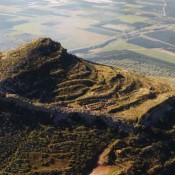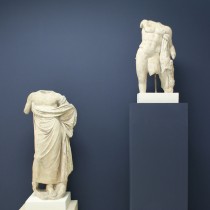During the Roman era, large areas of the Venice Lagoon which are now submerged were accessible by land. Roman artefacts have been found in lagoon islands and waterways, but the extent of human occupation of the lagoon during Roman times has been unclear.
Now, a study reports of the discovery of a Roman road submerged in the Venice Lagoon. The findings, published in Scientific Reports, suggest that extensive settlements may have been present in the Venice Lagoon long before the 5th cewntury, when the founding of Venice began.
Fantina Madricardo and colleagues mapped the lagoon floor using sonar, and discovered 12 archaeological structures (ca. 2.7×52.7m) aligned in a northeasterly direction for 1,140 metres, in the Treporti Channel, which is an area of the lagoon. Previous surveys at the same lagoon area brought to light stones similar to paving stones used by Romans during road construction. This led researchers to the conlusion that the structures might have been aligned along a Roman road. An additional four structures in the Treporti Channel were discovered. These were up to four metres tall and 134.8 metres long. The dimensions and features of these structures led to the thought that the largest of them could belong to a harbour, being a dock for instance.
The findings suggest that a permanent settlement may have been present in the Treporti Channel during the Roman era. The authors of the study propose that the road may have been part of a wider network of Roman roads in the Italian Veneto Region and may have been used by travellers and sailors to journey between what is now the city of Chioggia and the Northern Venice Lagoon.





